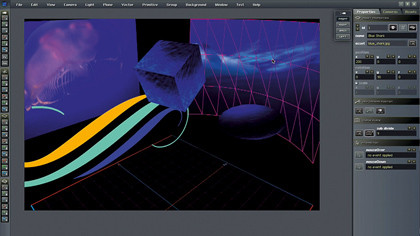The web developer's guide to 3D site building
Tech bringing a new sense of depth to website design
There's been a lot of talk about how the new features of FP10 will be utilised by the open source 3D libraries. Undoubtedly, the bar has been raised. The new drawing API methods will vastly increase the speed at which triangles can be rendered to screen.
Pixel Bender filters will have the potential to be used for realistic dynamic lightning effects and remove the second layer of triangles needed currently for effects. This will put a lot less pressure on processors and pave the way for a new burst of visual creativity. There's also the potential to use shaders for number crunching geometries at a lower, faster level.
The use of Alchemy with these libraries may be a possibility. Meanwhile, the Papervision team has announced the next version of the engine will be PapervisionX. According to their blog, they're completely rebuilding the whole engine to work with and take advantage of FP10's new features.

PAPERVISION: Visual PV3D provides a GUI interface to easily create objects and scenes using Papervision
And the Away3D team have already released a public version (branch 3.0) to run with FP10 that anyone can play with and provide patches for. It already includes Pixel Bender integration, so users can start experimenting with the possibilities.
Physics
While the introduction of inverse kinematics to Flash CS4 makes more realistic movement easily available, the use of 2D physics within Flash has largely been reserved for use in Flash games. Attempts to bring physics to 3D have been limited by the large number of calculations necessary and Flash players' ability to handle them while also rendering complex 3D scenes.
Sign up for breaking news, reviews, opinion, top tech deals, and more.

DUCK TO THE FUTURE: Oasis' recent campaign used Augmented Reality to create a fun series of games at www.rubberduckzilla.com
However, the open source JigLibFlash AS3 physics library ported from the C++ JigLib library looks like it will bring easy-to-use physics implementation to 3D libraries. And with the innovations discussed in FP10 there will potentially be a lot of processor power freed up for physics. This will make its commercial application a much more viable possibility.
Things are becoming more complex, but for those that can keep up, there are ever-increasing opportunities to create unbelievably immersive and innovative experiences, capturing users' imagination and attention like never before. Thankfully, the Flash community exhibits an uncommon willingness to share information, experiment and play.
Current page: Taking web design to the next level
Prev Page Flash 10 for 3D developers Next Page Augmented reality and other new ways to interact